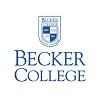
35+ Years of Shaping Entertainment and Pop Culture - From Oscar and GRAMMY-winners, to animators, to creative directors and entrepreneurs, our graduates make significant contributions to their industries. Learn More.

| Ranking | School | State |
|---|---|---|
| 1 | University of Southern California | California |
| 2 | DigiPen Institute of Technology | Washington |
| 3 | University of Utah | Utah |
| 4 | Carnegie Mellon University | Pennsylvania |
| 5 | Rochester Institute of Technology | New York |
| 6 | University of California, Santa Cruz | California |
| 7 | Southern Methodist University | Texas |
| 8 | DePaul University | Illinois |
| 9 | University of California, Irvine | California |
| 10 | Georgia Institute of Technology | Georgia |
| 11 | Massachusetts Institute of Technology | Massachusetts |
| 12 | University of Washington | Washington |
| 13 | Full Sail University | Florida |
| 14 | Rensselaer Polytechnic Institute | New York |
| 15 | Drexel University | Pennsylvania |
| 16 | Academy of Art University | California |
| 17 | Texas A&M University | Texas |
| 18 | University of Texas at Austin | Texas |
| 19 | Northeastern University | Massachusetts |
| 20 | North Carolina State University at Raleigh | North Carolina |
| 21 | Champlain College | Vermont |
| 22 | Indiana University | Indiana |
| 23 | Becker College | Massachusetts |
| 24 | Purdue University – Purdue Polytechnic Institute | Indiana |
| 25 | Baylor University | Texas |
Below are the Top 25 game design schools and colleges offering Bachelor of Science (BS) degree programs for 2020. For an explanation of ranking criteria, click here.

Established in 1880, University of Southern California (USC) serves 47,500 students enrolled in more than 200 undergraduate programs, 300-plus graduate programs, and more than 150 minors. Program options for aspiring game designers are offered through Viterbi School of Engineering’s Department of Computer Science and the Dornsife College of Letters, Arts & Sciences’ Interactive Media & Games Division. Dornsife programs are offered in conjunction with the School of Cinematic Arts.
Viterbi School of Engineering offers a BS in Computer Science (Games) and a Progressive Degree Program (PDP). The BS in CS (Games) is an interdisciplinary program that the school says is “designed to provide both an academic and professional orientation.” The goal of the program is to graduate students with a solid grounding in CS and a cross-disciplinary background in game development.
Topics covered in the cross-disciplinary game development portion of the degree program include computer animation, game production, video game programming, game hardware architectures, game engine programming, serious game development, introductory and intermediate game design, visual design for games and interactives, and two semester-long final game projects.
“Students graduating from this program will be capable of engineering next-generation games and simulations and their technologies in the entertainment and serious game fields. Additionally, graduates from this program will be able to further their education in graduate programs in game development and computer science.”
The PDP allows exceptional undergraduate students to “start graduate-level classes during their senior year and request a reduction in the units required for the Master’s degree.” This “allows students to earn the MS in Computer Science with one or two additional semesters of study.” The PDP is available for the MS in Computer Science (Game Development).
In addition to a wide variety of program options for aspiring game designers, USC is home to the GamePipe Laboratory. Sponsored by Intel, Sony, and other technology companies, the Lab produces a "Demo Day," which allows students to showcase their work. This semiannual event attracts game industry reps, reporters, faculty, students, and hundreds of spectators from across the country.

Founded in 1988, DigiPen Institute of Technology was the first school in the world to offer a bachelor’s degree in Video Game Development. More than 550 companies have hired DigiPen graduates and the school is located near more than 400 interactive media companies, making the region one of the largest video game centers in the world. The school, which serves around 1,100 students from all 50 states and close to 50 countries, has international campuses in Singapore and Spain along with educational partnerships with Keimyung University in South Korea and Thammasat University in Thailand.
DigiPen offers ten graduate and undergraduate program options in the areas of Art, Design, and Computer Science. Programs for aspiring game designers are offered through the Department of Game Software Design and Production. BS programs include Computer Science and Game Design, Computer Science in Real-Time Interactive Simulation (BS in RTIS), and a five-year BS in RTIS/MS in Computer Science.
Although the BS in RTIS offers “extensive training in mathematics and physics,” says DigiPen, students in the program also “work both individually and collaboratively to learn the fundamentals of Game Design, Production, and Programming. Additionally, they write game design documents and technical design documents, learn how to schedule tools and techniques, and participate in the full production of several games.”
DigiPen student games have won 57 Independent Games Festival awards (more than any other school) and to date, more than 550 companies around the world have hired DigiPen graduates. DigiPen alumni have been credited on more than 1,000 commercial game titles.

Founded in 1850, University of Utah (The U) serves nearly 33,000 students from across the U.S. and around the world. The school offers over 100 undergraduate and more than 90 graduate programs across 17 colleges and schools, and nearly 100 departments. The College of Engineering and the College of Fine Arts are home to the Entertainment Arts and Engineering Master Games Studio (EAE:MGS).
The Studio offers a Master of Entertainment Arts and Engineering (MEAE). Tracks include Game Arts, Game Engineering, Game Production, and Technical Art. According to the Studio, “all students in each of the tracks have a series of common classes including Game Design, Rapid Prototyping, Pre-Production, and Final Project.” In addition, students will “develop and enhance a professional game portfolio” and they will have the opportunity to complete an internship in the game industry.
The EAE Interdisciplinary Teaching Program now offers a BS in Games (BSG) designed “specifically for students who aspire to hold careers within the professional games industry or a related field, such as simulation, edutainment, or visualization.” The new program “provides a technical grounding in mathematics and computational skills, core knowledge in the design and production of digital playable experiences, and specialization options that prepare students for technical supervision, tools development and overall game design.”
Other offerings include a BS, five-year BS/MS, and Minor in Computer Science. The BS in Computer Science offers an Emphasis in Entertainment Arts and Engineering (EAE). The BS is offered through the School of Computing.

Founded in 1900, Carnegie Mellon University (CMU) serves more than 14,500 students representing over 100 countries. The school offers more than 100 programs across seven colleges. In collaboration with the School of Computer Science-Computer Science Department and the College of Fine Arts-Integrative Design, Arts and Technology (IDeATe), CMU offers a Bachelor of Computer Science and Arts (BCSA) with a Concentration in Game Design. IDeATe Collaborative Studios include Game Engine Programming offered by the Robotics Institute, Research Issues in Game Development offered by the Entertainment Technology Center (ETC) at CMU, and Programming for Game Designers—also offered by the ETC.
Head over to ETC at CMU where you will find two additional game design option. Founded in 1998, ETC offers Game Design Minor (in collaboration with IDeATe) and a Masters of Entertainment Technology (MET). The MET is jointly conferred by CMU’s School of Computer Science and the College of Fine Arts. MET is currently considered a terminal degree.

Rochester Institute of Technology (RIT) was born of an unlikely institutional marriage of an influential cultural association, the Rochester Athenaeum (est. 1829), and a technical training school, the Mechanics Institute (est. 1885). The Institute adopted the name Rochester Institute of Technology in 1944 and awarded its first bachelor of science degree in 1955.
Today, RIT serves more than 19,000 students majoring in everything from Art and Design to Urban Community Studies. The B. Thomas Golisano College of Computing and Information Sciences (GCCIS) houses the School of Interactive Games & Media (IGM). Here students can earn a BS in Game Design and Development or New Media Interactive Development.
The GCCIS IGM Game Design and Development program emphasizes game programming and cooperative education (co-op). The co-op is a required, full-time paid work experience that provides students with an opportunity to learn on the job in real-world industry settings. Students must complete two semesters, full-time, which amounts to a minimum 35-hour work week over the course of an academic semester. Past co-op companies include Microsoft, Sony Interactive Entertainment, Sapient-Razorfish, Google, EA, Epic Games, Cartoon Network, Seagate, Hi-Rez Studios, and many others.
In addition to the co-op experience, students in the BS in New Media Interactive Development program will explore casual games, physical computing, production, web, mobile, and more. All GCCIS IGM students have the opportunity to take any minor or enroll in a double major.

The University of California - Santa Cruz (UCSC) opened in 1965. The school serves 18,805 students enrolled in more than 100 degree programs across 10 colleges. The Jack Baskin School of Engineering (BSOE) started the first undergraduate game major in the University of California System. Offered through BSOE’s Department of Computer Science (CS) and Computational Media (CMPM), undergraduate options include a BS in Computer Science: Computer Game Design.
Course highlights include Intermediate Programming, Video Games and Visual Culture, Foundations of Video Game Design, Advanced Programming, Computer Systems and C Programming, Java, and History of Digital Games. Students will also take two “experience” courses including Game Development Experience and Game Design Experience as well as three Game Design Studio Courses (I, II & III) where students work in teams to develop a substantial video game.
Students in the program have access to The Center for Games and Playable Media (CGPM). Established in 2010, CGPM houses the schools five games-related research labs including the Expressive Intelligence Studio — one of the largest technical game research groups in the world. CGPM partners include eBay, Google, Sony, EA, Microsoft Studios, the MacArthur Foundation, the Defense Advanced Research Projects Agency (DARPA), and many others.

Founded in 1911, Southern Methodist University (SMU) serves nearly 11,800 students enrolled in more than 200 programs through seven schools. Lyle School of Engineering houses the Computer Science Program, which has a Game Development Track. The 10 credit hour track consists of Math and Physics, Programming for Commercial Game Engines, Software Development for Games, and Team Game Production. A Gaming Design Project is also part of the program as well as a 47 credit hour Computer Science Core consisting of courses such as Programming Languages, Assembly Language Programming and Machine Organization, and Digital Computer Design.
Computer Science students who would like to enroll in the Game Development Track must be admitted to the Guildhall Professional Certificate program and attend class at SMU Guildhall. Established in 2003, the Guildhall is SMU’s School of Video Game Development. The Professional Certificate in Digital Game Development is “tailored to students who wish to become actively involved in the game development industry as designers or artists,” says the school. Specializations for the program include Art Creation, Level Design, Production, and Software Development.

Established in 1898, DePaul University serves nearly 22,500 students from across the U.S. and about 70 countries. The school offers 300 programs of study across 10 colleges and schools and two campuses in Chicago. One of the first universities to offer a game development course for smartphones, DePaul offers game design programs at all levels through the College of Computing and Digital Media (CDM).
CDM is organized into three schools including the School of Cinematic Arts (SCA), the School of Computing (SoC), and the School of Design (SoD). Degree options include a BS and a Minor in Game Design and Game Programming and a BS in Computer Science with a Game Systems Concentration. The Minors are jointly offered by CDM SoD and SoC.
DePaul University also offers a Game, Cinema, and Animation Summer Academy. The Summer Academy is a weeklong program that features “hands-on instruction using the latest equipment and technology.” Participants may focus on Computer Game Development, 3D Computer Modeling and Animation for Games and Cinema or Digital Cinema Production.
Students in all Game Design programs have access to Prototype, Iterate, and Play Space and all CDM labs, including several that intersect with the program specifically, including game development and research, gameplay, virtual reality, and playtest and usability labs. Prototype, Iterate, and Play Space is a cross-disciplinary design, research, development, and assessment game lab housed in CDM that focuses on games exploring the human experience.
Recent DePaul Game Program graduates have gone on to work at Disney Interactive Studios, NeatherRealm Studios, Owlchemy Labs, Firaxis, Wargaming, Phosphor Games, Carbine Studios, Scientific Games, and many others. Several graduates have gone on to form their own gaming companies, including Young Horses, whose indie hit Octodad was developed at DePaul.

Established in 1965, the University of California - Irvine (UC Irvine) serves nearly 36,750 students enrolled over 200 programs through more than a dozen schools. The Donald Bren School of Information & Computer Sciences offers a BS in Computer Game Science (CGS). The school says the program is “designed around a set of core courses that introduce the fundamentals of computer science (programming, data structures, graphics and artificial intelligence), math (statistics, linear algebra and logic), and games (games and society, game design, game engines and multiplayer games).”
Nearly thirty electives offer students the opportunity to specialize, “focusing anywhere from typical game topics such as modeling, world building and mobile games to more peripheral topics such as software design and social impacts.”
Throughout the major, CGS students will “gain hands-on experience in creating a variety of digital games, for entertainment purposes, but also for education, training and engendering social change.” Working in teams, students “will employ a variety of different programming languages, game platforms and hardware.” Overall, the program “strongly emphasizes the technical aspects of creating games, as well as working in teams to design and implement them.”
Graduates of the program continue on to graduate school or they often “find employment in the industry, whether at a major publisher, smaller studio or as self-employed freelancers. Many squarely focus on entertainment, others succeed in bringing their skills to the design and development of serious games in a variety of domains, including healthcare and education.”

Georgia Institute of Technology (GeorgiaTech) was founded in 1885. The school opened for classes October 8, 1888, with just 129 students enrolled in a BS in Mechanical Engineering program. Today, GeorgiaTech serves more than 25,000 undergraduate and graduate students enrolled in over 80 degree programs and 50-plus minors in six colleges and 28 schools.
Degrees are offered through the colleges of Design, Computing, Engineering, Sciences, the Scheller College of Business, and the Ivan Allen College of Liberal Arts. Programs for aspiring game designers are available through GeorgiaTech’s College of Computing.
Undergraduate degree options include a BS in Computational Media (BSCM) with a Games Studies or Interaction Focus. A BS/MS in Computational Media/Digital Media and an Accelerated 5-Year Bachelor's/Master's are also available. In addition to the College of Computing, the BSCM - Game Studies Focus is supported by the School of Literature Communication and Culture within the Ivan Allen College of Liberal Arts.
The programs, known as Games@GT, are part of an institute-wide initiative designed to advance the game community through interdisciplinary research, funding opportunities, tech transfer and expansion of industry collaborations.
All Games@GT students have access to resources offered by the GVU Center at Georgia Tech and the Institute for People and Technology, as well as international campuses in China (the world's biggest games industry in terms of users and revenue) and France.
Graduates of the Game Programs at GeorgiaTech are prepared to seek careers in Interactive Game Design and Simulation, Special Effects Creation, Animation, 3-D Modeling, Robotics, Virtual and Augmented Reality and Web Design.

Massachusetts Institute of Technology (MIT) was founded 1861. The school serves around 11,575 students enrolled in more than 100 programs across five schools including the School of Architecture and Planning, the School of Engineering, the School of Humanities, Arts, & Social Sciences (HASS), MIT Sloan School of Management, and the School of Science. Massachusetts Institute of Technology is also home to MIT Game Lab, MIT Education Arcade, and Singapore-MIT GAMBIT Game Lab.
Together, the labs provide the opportunity to study, design, and develop games as a supplement to several degree programs, so anyone interested in games can create their own program of study. Students may choose the BS in Comparative Media Studies (CMS) with a Games and Interactive Media “Cluster.” BS degrees in Computer Science and Engineering are also available.
Electrical Engineering and Computer Science offers an extensive graduate program in Computer Science, which allows students to “study and participate in active research of aspects in computer science that are vital in the creation of modern digital games, such as artificial intelligence, networking, and computer graphics.” Minors in CMS with Games and Interactive Media and Computer Science are also available. The CMS programs are available through the HASS Department of Comparative Media Studies/Writing.
Other unique degree pathways include a BS in Brain & Cognitive Science for those interested in psychological games and behavioral change and a BS in Business for those interested in studying business practices required for creating their own game company. The BS in Brain & Cognitive Science is offered through the MIT Department of Brain and Cognitive Sciences and the BS in Business is offered through MIT Sloan School of Management.

Established in 1861, University of Washington (UW) serves around 56,795 students across three campuses located in Seattle, Bothell, and Tacoma. The school offers more than 570 degree options across 300+ programs and 16 colleges and schools. The Paul G. Allen School Computer Science & Engineering offers a BS in Computer Science, a BS in Computer Engineering, and a Combined BS/MS in Computer Science & Engineering (CSE). All programs offer the opportunity to focus in Graphics, Vision, Games, and Animation.
In the BS degree programs, students can work with faculty and graduate students on research; collaborate with industry partners; tackle complex design and implementation projects in capstone courses; and tailor their degree to meet their interests and goals. Sample courses include Computer Animation, Computer Graphics, Advanced Digital Design, Digital Sound, Data Visualization, and Artificial Intelligence. In addition, students can earn a Certificate in Game Design.
Students in all programs have access to three main labs at UW CSE. All are engaged in research spanning the areas of animation, computer game science, graphics, vision, and visualization. Labs include the Graphics and Imaging Lab (GRAIL), the Center for Game Science, and the Animation Research Labs. Per UW, the GRAIL group is known for “groundbreaking” research in computational photography, games for science and education, 3-D reconstruction, Internet photo collections, object recognition, human shape and motion analysis, information visualization, and animation, while researchers at the Center for Game Science use gaming to solve grand challenges, crowdsource human problem-solving to aid scientific discovery, and improve student interest and achievement in mathematics.
The Animation Research Labs is a multi-disciplinary effort that brings together faculty and students from UW CSE, the Department of Architecture, and the Schools of Art, DXARTS, Drama, and Music. The ARL is focused on advancing the state-of-the-art in animation through teaching, research, and computer-animated production in collaboration with experts from Disney Animation Studios, Bungie, Industrial Light & Magic, Microsoft Game Studios, Pixar, and many others.

Established in 1979, Full Sail University serves 15,000 students enrolled in 78 Bachelor’s, Master’s, and Associate degrees in the areas of Entertainment, Media and the Arts. Graduate Certificates are also available. The Game School at Full Sail offers BS degrees in Game Art, Game Design, Game Development, Simulation & Visualization, and Mobile Development.
In the Game Art BS students will create 3D content and “take traditional art and animation principles and apply them to models that look, move and articulate artistically,” says the school. Course highlights for the program include Game Animation, Motion Capture, and Level Assembly & Lighting.
The Game Design BS is designed to enhance the students “ability to work in a game studio environment.” The program “is comprised of high-level game design and production courses that will take” students “deep into the game development pipeline.” The program covers key industry concepts influencing both systems and level designs that will prepare students to prototype and evaluate their game projects. Course highlights include Game Mechanics, Game Balancing, and Prototyping.
The BS in Game Development guides students through the entire game development cycle, from pre-production to finished product. Course highlights include Artificial Intelligence, Engine Development, and Data Structure and Algorithms. Graduates will have the ability to create program code for 3D graphic display, multiplayer gaming, artificially intelligent opponents, and real-time virtual environments.
The BS in Simulation & Visualization equips students with the programming and critical-thinking skills needed to study and design virtual systems. Course highlights include Virtual and Augmented Reality, Artificial Intelligence, and Computer Graphics. Through hands-on experience, students will develop their “tech savvy in order to keep pace with an ever-evolving industry.”
The Game Art and Game Design BS degrees are available on campus and online, while the MS in Mobile Gaming is available entirely online.

Founded in 1824, Rensselaer Polytechnic Institute (RPI) is the oldest technological research university in the U.S. The school serves nearly 8,00 students enrolled in more than 145 programs across five schools including Architecture, Engineering, Humanities, Arts and Social Sciences (HASS), Lally School of Management, and Science. Programs for aspiring designers are offered through HASS and include a BS in Games and Simulation Arts and Sciences (BS GSAS) and a BS in Electronic Media, Arts, & Communication (EMAC).
BS GSAS students may choose a concentration or dual BS degree from the following options: Arts (Electronic Arts), Human Computer Interaction (HCI), Computer Science, Management/Entrepreneurship, Cognitive Science, or Writing for Games.
Established in 1996, the BS in EMAC program is an interdisciplinary program that includes courses in communication as well as in digital art and animation, video, electronic music, and graphic design, supported by RPI’s strong technological infrastructure. The EMAC curriculum offers concentrations in Digital Storytelling (Animation, Video, Game Design), Graphic Design, Interaction Design, Marketing Communication and Design, Sound Design and Popular Culture.
Students may enhance their education by adding a minor, dual major, study abroad, internship, or even a co-terminal graduate program.

Drexel University was established in 1891. It serves nearly 29,000 students enrolled in over 200 degree programs across 15 colleges and schools. The College of Computing & Informatics offers a BS in Computer Science (BSCS) with Concentrations in Game Programming and Development (GMPD), Game Development and Design, and Artificial Intelligence Concentrations. BSCS students may also Minor in Interactive Digital Media.
The Westphal College of Media Arts & Design also offers BS degrees in Game Art and Production and Game Design & Production. A final option is for BSCS students interested in teaching game design. The School of Education offers a Graduate Certificate in Learning in Game Based Environments.
All BSCS students have access to Drexel Game Design and the RePlay Lab. DGD and RePlay are collaborative efforts between the Digital Media program (in the Westphal College of Media Arts & Design) and the Computer Science department (in the College of Computing and Informatics).

Academy of Art University was established in 1929. The school serves more than 7,200 students from 112 countries enrolled in dozens of Art, Design, Fashion, and Architecture programs. Degrees are offered at both the undergraduate and graduate levels, and many programs are available entirely online.
The School of Game Development offers a variety of degree programs for aspiring game designers, including a BS in Game Programming. According to the school, the multidisciplinary program provides a “well-rounded education in the arts with an emphasis on understanding and applying techniques including 3D modeling, animation and lighting in video game production.”
Courses cover techniques in game design, game programming, concept art, 3D modeling, and animation, among others. Course highlights include History of Comics: International and Alternative Comics, 3D Character Artist, 3D Environment Modeling, Environment Concept, Game/Level Design, UX/UI, and The Power of Signs: Semiotics & The Visual Arts. Internship opportunities, collaborative projects, and Games Portfolio Preparation are also part of the program.
Students will graduate with a solid grasp of the fundamental game art principles, including knowledge of game engine technology, and pre-production and production environments. The Game Development program at Academy of Art prepare students for positions such as game designer, 3D modeler, concept artist, UI/UX designer, and many others.

Texas A&M University (TAMU) is the state’s first public institution of higher learning. Established in 1876, the school serves 69,465 students enrolled in nearly 400 degree programs across 16 colleges and schools. The College of Architecture founded the Visualization program in 1989. The school says that the undergraduate Visualization curriculum “integrates elements of fine arts, three-dimensional design, scientific inquiry and digital technology to provide a broad, wide-ranging educational experience. The core of the program is the studio experience, which explores the relationship between theory and practice through a variety of exercises and projects using traditional and electronic media.”
Another highlight of this BS program is the required semester away during the Junior year followed by a capstone proposal and studio during the Senior year. “A broad range of directed electives allows the student to gain an in-depth understanding in an area of specialization.” Graduates of the program are prepared for employment in such fields as user interface and web design, the entertainment industry (game design and development, animation and visual effects), as well as fields such as modeling and simulation, data analytics and other fields where visualization contributes to understanding.
Graduates may also “enter graduate programs that emphasize digital media in either computer science or art/design.”
All Visualization students have access to the Department of Visualization’s Learning Interactive Visualization Experience Lab. Established in 2014, the Lab “provides space for graduate and undergraduate students to create game prototypes while learning about game theory, the art and science of the visual image and game history. In the lab, through research and rigorous scientific process, students collaborate with specialists from visualization, educational psychology, computer science and engineering to create innovative, interactive software.”
Visualization program alumni can be found working as creative talent for Hollywood’s leading animation and special effects studios including Pixar, Blue Sky, Walt Disney Animation Studios, Industrial Light and Magic, DreamWorks Animation, Rhythm & Hues Studios and Reel FX.

Founded in 1883, the University of Texas - Austin (UT Austin) serves nearly 52,000 students enrolled in over 300 academic programs in 18 colleges and schools. A unique program for aspiring game designers is available through a collaboration between the College of Fine Arts (CoFA), the Computer Science Department (CS), the Radio-Television-Film Department (RTF), and the Center for Arts and Entertainment Technologies (CAET).
Formerly known as the Game and Mobile Media Applications (GAMMA) program, the University of Texas at Austin Game Development and Design Program allows participating students to “individually build their pertinent skills within their respective degree programs, then come together to collaboratively develop 2D and 3D games for AR/VR, mobile, online, and personal computer platforms in the program’s culminating experience: The Capstone Course,” says the school.
Game students also have the opportunity to work “alongside organizations such as UT’s EGaDS! and IGDA Austin,” and with local game and mobile studios, and industry professionals.
Students may earn a certificate in CS Game Development, CS Mobile Computing, CoFA Digital Art Production, CoFA Digital Audio Composition & Production, CoFA Digital World Designer or RTF Visual Effects & Animation. Certificates are awarded in addition to the undergraduate degree in any given program outside of the Game Development and Design Program.
The BS in Computer Science with a Concentration in Game Development (BS CS) is offered as well as a Five-Year BS/MS Integrated Program in Computer Science. The Game Development Concentration culminates in a Capstone Course, which includes 2D Game Development and the 3D Game Development studio. All CS programs offer internships and the opportunity to obtain permanent employment in game development and interactive entertainment.
Graduates of all Game Programs at UT Austin are “ready to design, develop, and provide leadership for the exploding growth in AR/VR, game, mobile app, and creative media agencies and studios in Texas and around the world.”

Northeastern University was established in 1898. The school serves nearly 37,000 students enrolled in over 150 undergraduate majors and concentrations and more than 125 graduate programs across nine colleges and schools. Programs for game designers are offered through the College of Arts, Media and Design (CAMD), which serves nearly 6,000 students, and the College of Computer and Information Science (CCIS) - Khoury College of Computer Sciences.
CCIS offers a BS in Computer Science and Game Development and a Game Design and Music BS with a Concentration in Music Technology. The combined Computer Science and Game Development major focuses on “building and developing games and playable media experiences” along with “courses in computer science and specialized game technology and design. Interdisciplinary courses enable students to develop their creative and entrepreneurial abilities, as well as create a strong portfolio of game pieces.” The program requires 133 credit hours to graduate.
The 138 credit hour Game Design and Music BS with a Concentration in Music Technology is a unique program that “focuses on the creative application of digital sound technologies to a broad range of artistic, social, and industrial purposes, including experimental composition, film, video, theatre, game design, mobile applications, sound design for urban environments, and beyond.”
In addition to plenty of co-op opportunities, the program offers a diverse set of courses ranging from Programming Basics and Game Interface Design to Hip Hop in the Music Industry and Interactive Music Programming. Students in this program will complete a Music Technology Capstone/Senior Recital or a Game Design Capstone.

North Carolina State University (NC State) was established in 1887. The school serves 34,340 students enrolled in more than 300 degree programs across 12 colleges and 65 academic departments. The College of Engineering, Department of Computer Science houses the game program. Degree options include a BS in Computer Science (CSC) with a Game Development Concentration and an Accelerated Bachelor’s/Master’s (ABM) degree.
The BS program “allows the student to develop an understanding of the scientific and technological principles associated with the design and development of computer and console games for both entertainment and serious applications,” says the school. Students will take all of the courses required for the CSC as well as Game Design and Development, Artificial Intelligence (AI), Building Game AI, Computer Models of Interactive Narrative, Human-Computer Interaction, and Computer Graphics.
Students are also required to take Advanced Graphics Projects and Advanced Game Development Projects. Internships and study abroad opportunities are also available, and electives run the gamut from Game Studies and Fiction Writing to Fantasy, Film and Science Fiction.
The ABM program allows students to complete the requirements for a BS degree and a non-thesis Master’s in the same field within 18 months of completing the Bachelor’s degree.
Students in all programs will benefit from The Digital Games Research center (DGRc). Created in May of 2007, the center was designed to “undertake an ambitious agenda of research, education and outreach activities in the area of games and games technologies.”
“Housed in the Department of Computer Science, the center’s faculty include colleagues from the colleges of Education, Engineering, Design, Management and Humanities and Social Sciences that collaborate on a wide range of research and educational initiatives which focus on new modes of entertainment and interaction in digital worlds.”

Established in 1878, Champlain College serves around 2,130 students from 44 states and 18 countries. The school offers more than 150 subject areas, including undergraduate majors, minors and specializations as well as online and on-campus graduate degree programs and certificates. Champlain has four academic divisions including the Division of Communication & Creative Media, Robert P. Stiller School of Business, the Division of Education & Human Studies (EHS), and the Division of Information Technology & Sciences.
The Division of Communication & Creative Media offers BS degrees in Game Art & Animation, Game Design (with an optional Specialization in Sonic Arts), Game Production Management, and Game Programming. Through the game programs’ “Upside-Down Curriculum,” students will take relevant courses, including Game History & Development and Introduction to Game Design, in their first year at Champlain. This gives them the advantage of gaining hands-on knowledge about the major from the start. Students will have the opportunity to build their portfolios using state-of-the-art technology resources at the school’s new cutting-edge multimedia, 3-D art and game production labs.
Another important aspect of the Game program is the collaborative environment of the school’s Game Studio. Here, Game Programming majors work with their counterparts in Game Art & Animation and Game Design as well as Game Production Management to build games from start to finish. The Game Studio replicates a professional game development setting to give students a firsthand understanding of how creative teams collaborate to develop individual game assets and coordinate them into a functional product.
All students have the opportunity to study abroad in Montreal, Canada, with internship opportunities at the Montreal Game Summit and the Montreal International Game Developers Association. Recent internship opportunities (outside of the Canada options) include Microsoft Game Studios and Wired Magazine.
Students may also participate in the Game Development Senior Show where they will present games they create with their Game Studio team to recruiters from all over the East and Canada, including Square Enix/Eidos, Gameloft, Warner Bros./Turbine, Behaviour and Activision/Vicarious Visions. Networking opportunities are also part of the program. Facilitated by the Game Studio Career Coach, these opportunities allow students to meet with top recruiters from companies such as Ubisoft, ArenaNet, Crystal Dynamics, Activision, Survios, Insomniac, Rockstar, and Sony.

Indiana University Bloomington (IU Bloomington) was founded in 1820 as “State Seminary.” The Seminary became Indiana College in 1828 and Indiana University in 1838. Today, Indiana University is the largest and oldest Indiana University campus, serving nearly 42,950 students (of the systems 91,515 students) enrolled in 577,209 credit hours. The school has more than 550 academic programs across 16 degree-granting colleges and schools, plus the Hutton Honors College.
The College of Arts and Sciences is home to The Media School. Here, students can earn a BS in Game Design with a Specialization in Game Art, Game Audio, or Game Production. A Certificate in New Media and Interactive Storytelling may be added to any program.
All game students will study all aspects of programming, art, sound, design, and project management. Courses are a mix of hands-on production classes and seminars in theoretical foundations. Game theory and system strategies is highlighted as well as the production and publication of a finished game developed as part of a team. This original game will be produced through three workshops taken three semesters: Prototype, Demo, and Publish.
All students will also have the opportunity to select 15 elective credits to further refine their career path. In addition, BS students may take Human Computer Interaction courses in the School of Informatics and Computing and study abroad courses such as Game Development: Programming and Practice, Rhetoric of Gaming, and Game Development Lab in Copenhagen, Denmark.

John Hancock and Samuel Adams signed Becker College’s founding charter. Notable graduates and students include Eli Whitney (1788), William Morton (1836), and Elliott P. Joslin. Founded in 1784, Becker College is one of the 25 oldest institutions in the U.S. The school, which enrolls nearly 1,700 students from around the country and across the globe, offers 29 areas of study across six academic divisions including Animal Studies, Business, Criminal Justice and Legal Studies, Design, Education and Psychology, and Nursing and Health Sciences.
The Design Division houses the Interactive Media Design program, which offers a BS in Applied Computer Science with a Game Programming Specialization. The program offers access to Becker’s Massachusetts Digital Games Institute (MassDiGI). Established in 2011, “MassDiGI is the result of creative collaboration among academia, industry and government, aimed at fostering the growth of the game industry and innovation economy.” It is a statewide center, “designated by the Commonwealth, for entrepreneurship, academic cooperation and economic development across the Massachusetts digital and video games ecosystem.”
Students work on real game properties, government simulation projects, and educational and serious games that the school says, “are making a difference in people’s lives.” Students participate in internships and externships, and are exposed to networking opportunities with industry professionals at conferences such as the Game Developers Conference (GDC) and Boston’s PAX East, where they debut the games they created.
Becker students have produced digital technology applications for John Hancock, Meditech, UMass Medical School, Oracle, the Internal Revenue Service, and the U.S. Army, to name a few.

Established in 1869, Purdue University serves more than 43,400 students from all 50 states and nearly 130 countries. One of the 10 academic colleges of Purdue University, Purdue Polytechnic Institute was founded in 1964 as Purdue University College of Technology. Around 12% of Purdue’s students are enrolled in the Polytechnic Institute, which houses six academic departments and schools offering 70 academic options in six subject areas. The Department of Computer Graphics Technology (CGT) a BS in CGT with a Game Development and Design Major.
The CGT program provides STEM education (science, technology, engineering, and math) and games. Studies include trigonometry, calculus, and physics, as well classes in video game design and development, animation, visualization, rendering and programming. Students will also have the opportunity to complete a unique research project.
Projects open to undergraduate students have focused on the use of games for sustainable energy, therapy and medicine, entertainment, information visualization and more.
Students may also earn a BS CGT/MS Technology with a Specialization in CGT, which may be completed in just five years instead of six years or more if pursued separately. Graduates of the game design programs at Purdue Polytechnic Institute have gone on to work for EA Games, Riot Games, Volition, Zynga, and many others.

Chartered in 1845, Baylor University serves more than 18,000 students from all 50 states, the District of Columbia, and 89 countries. The school offers a broad range of degree programs (more than 250) among its 12 nationally recognized academic divisions. The School of Engineering and Computer Science houses the Department of Computer Science, which offers a Game Development Concentration within the BS in Computer Science (BSCS) program.
The school says the concentration is designed to provide an understanding of the development and application of interactive digital media technologies. This program is offered in cooperation with the Film and Digital Media Division of Communication Studies and combines media course offerings with technical content in order to produce a graduate with skills that go beyond design and implementation.
The program features the Computer Science core, with a three-course game development sequence, and a four-course media production sequence taught in the Film and Digital Media department. As a specialization of the BSCS, the curriculum features the breadth of an undergraduate Computer Science degree along with specialization in areas central to the game development industry. Graduates of the program are awarded a fully-accredited Computer Science degree with all the associated career and graduate education opportunities.